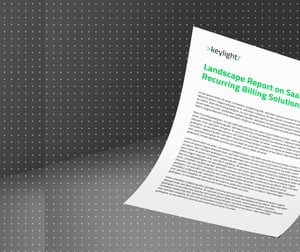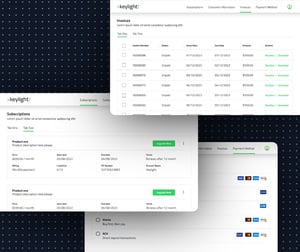Written by Daniel von Jeinsen | Sales & Partner Strategy Manager at keylight Germany
 or many businesses, the hot topic of conversation is the economic climate, which impacts customer spending habits and causes them to reconsider the value of their investments.
or many businesses, the hot topic of conversation is the economic climate, which impacts customer spending habits and causes them to reconsider the value of their investments.
Today, in particular, I want to focus on the issue of raising prices because this is an area of contention and debate for many subscription businesses. The answer is simple: Raise your prices now to inflation-proof your business.
Is it the right time to increase prices now?
Many subscription businesses feel conflicted about their pricing at the moment. Here are a few straightforward facts that can help you understand why you need to raise prices right now:
- Your business is bleeding cash due to inflated prices and is attempting to capture some of this revenue back to keep profits in place. Evaluate the costs associated with running your business and adjust your prices accordingly.
- Keeping prices too low can be detrimental to your business. If you’re not charging enough, you may not make enough profit to cover your expenses and invest in growing your business.
- Your pricing changes how people view your subscription business. Most often than not, customers are willing to pay more for high-quality products and services, so setting reasonable pricing can show how valuable your offerings are to them.
- Raising your prices can also help you attract a higher-quality customer. With a fair price, you’re signaling that your business is professional and provides value. You attract high-caliber customers who will pay for quality and commit to you in the long run.
There are, of course, limitations, but if you do it wisely, it will prove invaluable for your organization — the question is, how do you do it?
Will you lose customers if you raise prices?
Yes, but you will experience some percentage of customer churn anyway due to inflation because some of them will inevitably need to slash expenses. These customers would have churned within a year but now you know in advance and can plan accordingly.
With the right strategy, however, you can retain existing customers and bring in new subscribers at a higher and more manageable baseline fee to place your business in a better position.
With this in mind, there are three key things subscription businesses need to consider when it comes to optimizing their pricing strategy:
- To determine your pricing based on what your customer is willing to pay.
- To adopt pricing segmentation (if you haven't already) and charge different prices to customers based on what they are willing to pay.
- Repackage your offering to allow customers to adapt.
How to optimize your pricing?
So, what do you need to consider to optimize your pricing for customer retention and business growth?
New prices for potential customers
In a recession, demand will drop regardless of price increases. New potential customers already see potential value in your offering. You can experiment with fair pricing to get them over the line if you choose, but the main priority for this group is to make sure that you are clear about the value of your product and that you deliver it.
Remember, if you have new customers who have recently joined, the relationship with them is more fragile than those with long-time customers. It could take some time until they become ‘sticky’, so its best to segment them out automatically.
Segmented pricing for existing customers
Segmentation is your first port of call - differentiating between customers by their willingness to pay for your product or service. Separate your struggling customers from those who are financially stable by studying your customers’ reports. That includes their subscription history, purchasing behavior, and other data points.
Those customers in deficit are the most likely to result in churn whether you raise your prices or not. When you raise your prices, some customers may re-evaluate their willingness to pay, but this will focus on whether your service is delivering value for them and what they need rather than simply looking at costs.
Keep an eye out on your competitors
If your competitors raise their prices follow immediately. The subscription space is something of an ecosystem, so even where businesses are competitors, there is mutual benefit in raising prices in tandem with one another and keeping them within certain margins of difference.
In case your competitors have not increased their prices yet, you will need to set the parameters for pricing yourself. Set your pricing within respectful parameters that speak to your customers’ willingness to pay.
What happens after the price rise?
After you have implemented a change with your customers, you need to monitor customer behavior and be prepared to respond appropriately. Some will re-evaluate your offering, and you may find that there are spaces in which you need to incentivize them to stay by reiterating the value of your product. You can do this through tools such as:
- Price guarantees
For example, you could offer fixed price stability for their next term. - Discounts
you could offer discounted prices or coupons to customers on the verge of churn. - Loyalty programs
you could offer new features to cherished customers first and incentivize if they promote you.
Ultimately, pricing strategies are amongst the most important tools in a subscription business—consider being bold in this current economic climate. Taking financial decisions that have a direct impact on your growth should be supported by a future-proof system that is always ready to adapt to your next steps—including a revenue engine that allows flexible price management and testing.

To find out more
request a demo
Start with >keylight/






